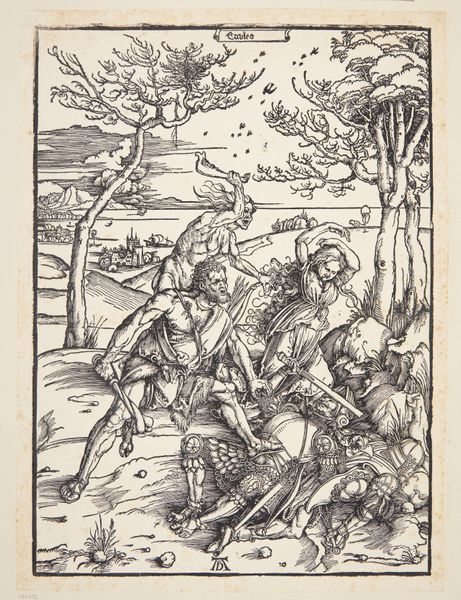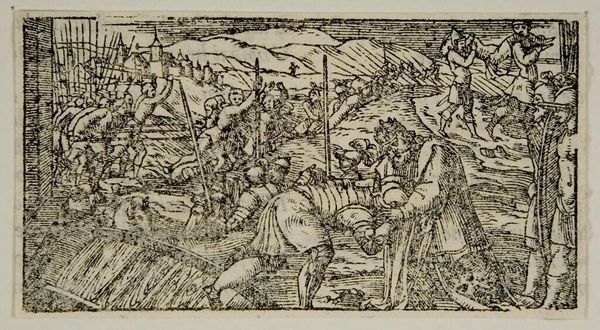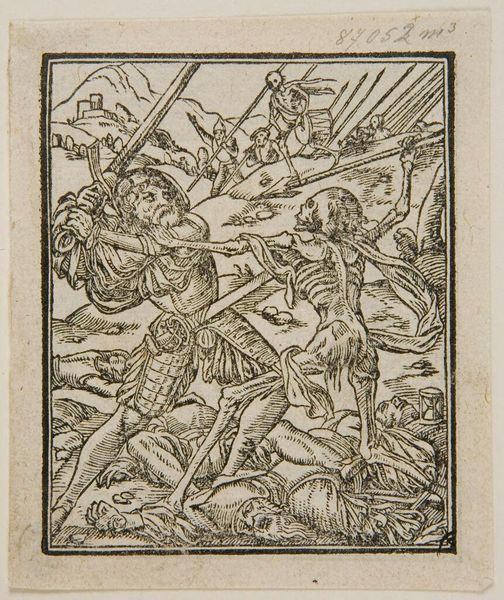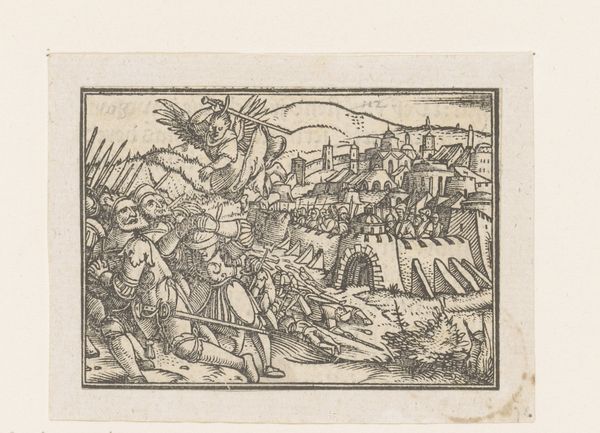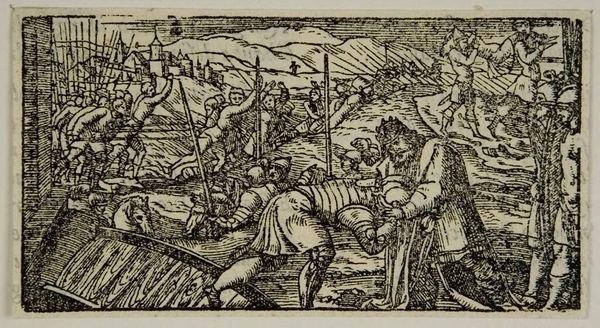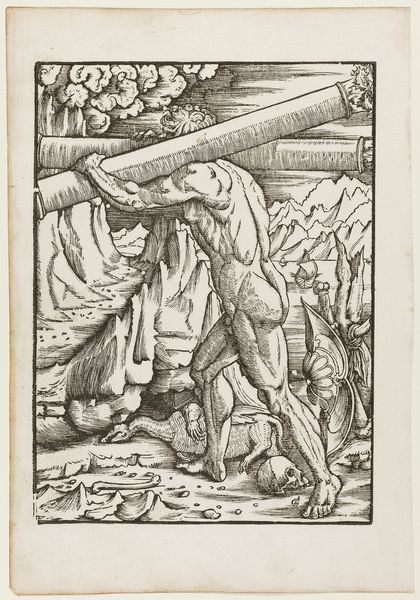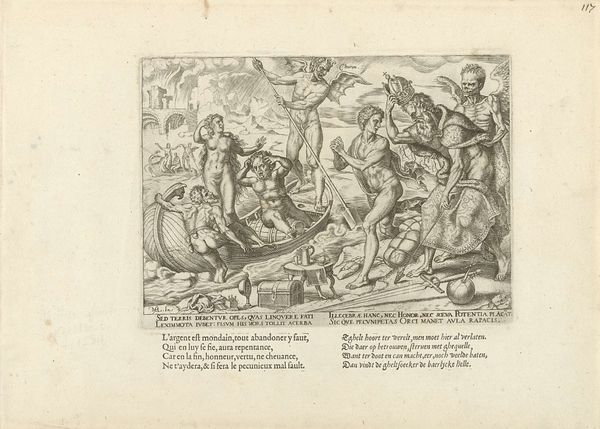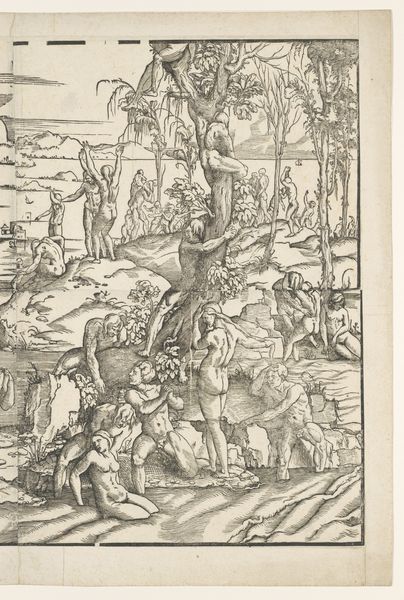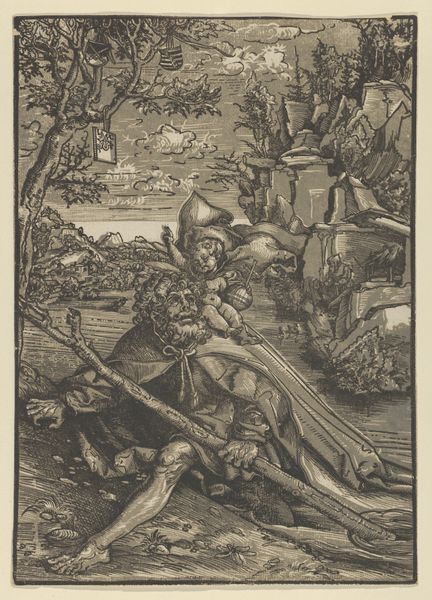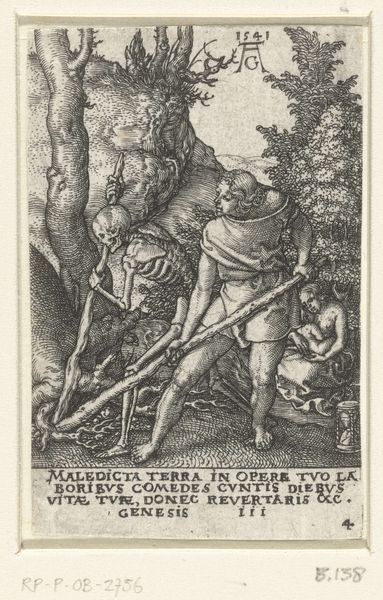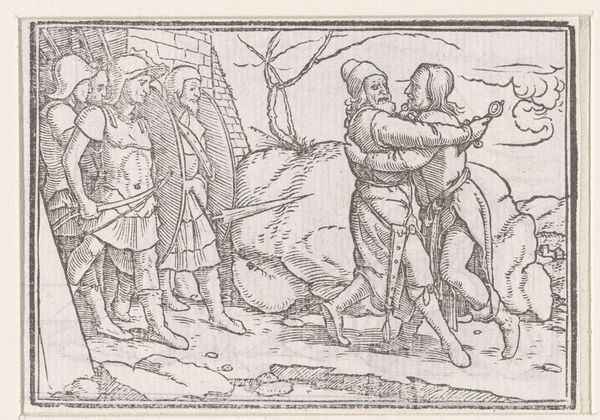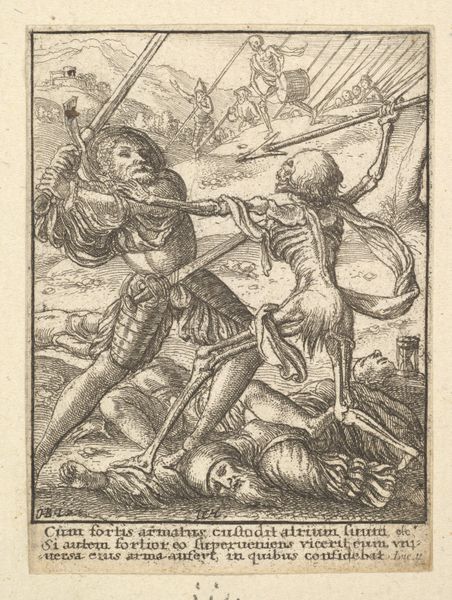
print, woodcut
#
narrative-art
# print
#
figuration
#
woodcut
#
line
#
history-painting
#
northern-renaissance
Dimensions: height 65 mm, width 50 mm
Copyright: Rijks Museum: Open Domain
This small print was made by Hans Holbein the Younger, likely in the 1520s. It's a woodcut, meaning the artist carved away the negative space from a block of wood, leaving the lines that would appear in the final image. The choice of wood as a medium is crucial here. It's an accessible, relatively inexpensive material, allowing for the widespread distribution of images. Holbein was working at a time when printmaking was democratizing art, making it available beyond the wealthy elite. In this image we see Adam tilling the soil, a direct consequence of his and Eve's transgression in the Garden of Eden. This is work, the task laid upon humanity. Notice that it also includes the Angel of Death, making this toil into labor, for wages. The stark, graphic quality of the woodcut emphasizes the harsh reality of their situation. It serves as a stark reminder of the consequences of disobedience, and the value – as well as the hardship – of honest labor. By focusing on the material and the making, we can appreciate how this small print speaks to big ideas about sin, redemption, and the dignity of work.
Comments
No comments
Be the first to comment and join the conversation on the ultimate creative platform.
